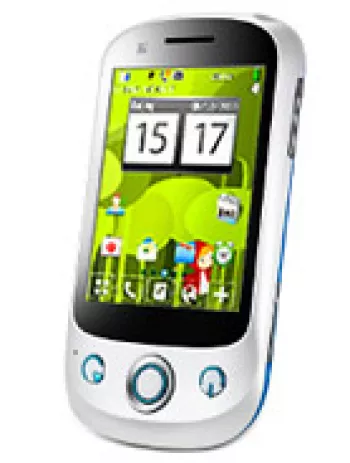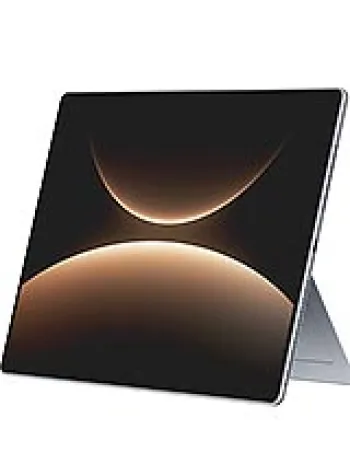
Network Technology and Launch Details
The Huawei Impulse 4G was launched in September 2011, bringing with it capabilities that supported GSM and HSPA technologies. This device was designed to cater to the needs of users who required reliable data and voice communication services. Supporting 2G bands such as GSM 850 / 900 / 1800 / 1900 and 3G bands including HSDPA 850 / 1900 / 2100, it offered substantial connectivity options. The device was capable of delivering data speeds up to HSPA 14.4/5.76 Mbps, which, at the time, was a respectable benchmark for mid-range smartphones. Despite being discontinued, the Impulse 4G was an important representation of Huawei's innovation in mobile technology.
Physical Build and Display
The design of Huawei Impulse 4G was straightforward and practical. With dimensions of 120 x 65 x 11.6 mm and a weight of 130 grams, it was fairly compact and comfortable to hold in hand. The front of the device was dominated by a 3.8-inch TFT display, offering a resolution of 480 x 800 pixels. This provided users with a clear and vivid screen, though limited by today’s standards, the ~246 PPI pixel density enabled decent clarity for daily tasks and casual multimedia consumption. Despite a screen-to-body ratio of approximately 52.7%, the phone was user-friendly and facilitated ease of navigation across the interface.
Operating System and Performance
Running on the Android 2.2 (Froyo) operating system, Huawei Impulse 4G was equipped with a Qualcomm MSM7230 chipset. The 800 MHz Scorpion CPU, alongside the Adreno 205 GPU, enabled the phone to handle basic applications and functions smoothly. While it wasn’t designed for heavy multitasking or gaming, the hardware setup was adequate for applications like email, web browsing, and social media.
Memory and Storage Options
The device came with 512MB of RAM, coupled with an internal storage option expandable via a dedicated microSDHC slot. This allowed users to store essential applications and moderate amounts of media and documents, and the option to expand storage was essential for users needing additional space. Although limited by today's standards, at the time, 512MB RAM was sufficient for most efficient day-to-day operations.
Camera Specifications
In the camera department, the Huawei Impulse 4G featured a single 5 MP rear camera with autofocus and an LED flash. This setup was capable of capturing decent photographs under good lighting conditions. It also offered video recording at 720p@30fps, making it adequate for capturing quick memories on the go. The absence of a front-facing selfie camera limited its appeal for video calls or selfies, which were gaining popularity at the time.
Audio and Connectivity Features
Audio quality was supported by a loudspeaker and a 3.5mm audio jack, allowing users to enjoy music and calls through standard headphones. Connectivity options included Wi-Fi 802.11 b/g/n, Bluetooth 2.1 with A2DP, and EDR for wireless connections, alongside GPS and A-GPS for location services. The device lacked a radio but included a microUSB 2.0 port for charging and data transfer.
Sensors and Battery Life
The Huawei Impulse 4G was equipped with essential sensors such as an accelerometer, proximity sensor, and compass, aiding in the overall usability and functionality of the smartphone. Powering the device was a removable Li-Ion 1500 mAh battery, offering up to 240 hours of standby time and up to 4 hours of talk time, ensuring a moderate use span before requiring a recharge. The removable aspect of the battery offered flexibility for users to replace it if needed.
Concluding Remarks and Legacy
Upon release, the Huawei Impulse 4G was priced around 80 EUR, representing a reasonable investment for a mid-tier smartphone in 2011. Available in black, it catered to users looking for a reliable device without the premium cost associated with high-end models. The Huawei Impulse 4G showcased Huawei's commitment to developing functional, affordable phones that catered to a wide audience. While it may not stand out in today’s competitive smartphone market, at its peak, it provided an affordable entry point for many into the world of smartphones, helping Huawei establish itself further as a global player in the mobile industry.
Key Features of Huawei Impulse 4G
- Supports GSM/HSPA network technology with 3G bands: HSDPA 850/1900/2100.
- HSPA speed of up to 14.4/5.76 Mbps for fast data connectivity.
- Compact dimensions of 120 x 65 x 11.6 mm and light weight of 130 g.
- 3.8-inch TFT display with a resolution of 480 x 800 pixels (246 ppi).
- Powered by Android 2.2 (Froyo) with a Qualcomm MSM7230 chipset.
- 800 MHz Scorpion CPU and Adreno 205 GPU for decent performance.
- Expandable storage via microSDHC card slot.
- 5 MP main camera with autofocus and LED flash capable of 720p video recording.
- Includes standard 3.5mm audio jack and loudspeaker.
- Connectivity features include Wi-Fi 802.11 b/g/n, Bluetooth 2.1, A2DP, EDR, GPS, A-GPS, and microUSB 2.0.
- Sensors: Accelerometer, proximity, and compass for enhanced interactivity.
- Removable Li-Ion 1500 mAh battery offering up to 240 hours of standby time.
- Cost-effective smartphone priced at about 80 EUR.
Disadvantages of Huawei Impulse 4G
- Lacks support for 4G LTE technology, only supports GSM/HSPA networks
- Outdated Operating System (Android 2.2 Froyo)
- Low CPU performance at 800 MHz
- Limited RAM of 512MB, which may affect multitasking capabilities and performance
- No front-facing camera for selfies or video calls
- Low stand-by and talk time battery performance (1500 mAh battery)
- No FM Radio
- Discontinued product, may not receive updates or support

View Also
More Phones
All Rights Reserved +14268 Phones © Mobilawy 2025

























